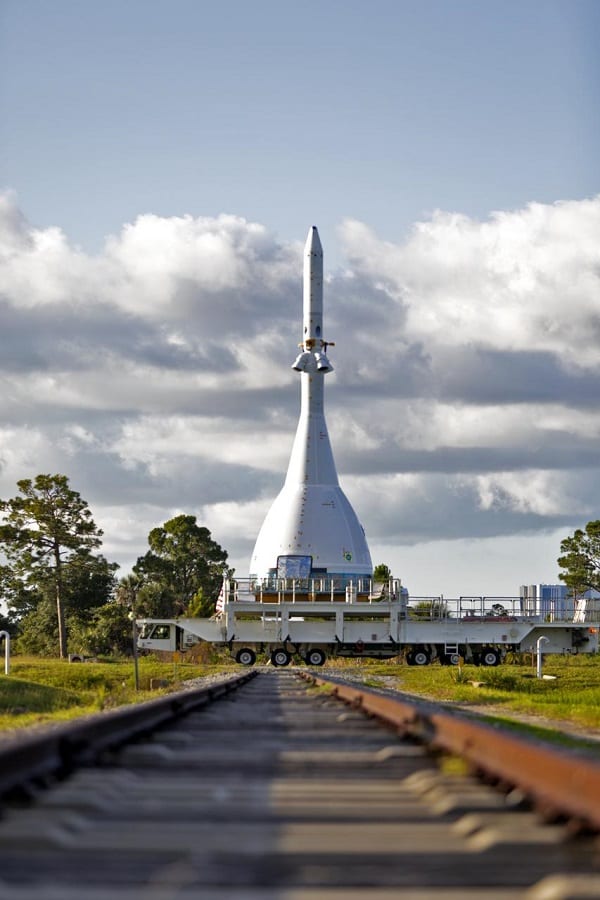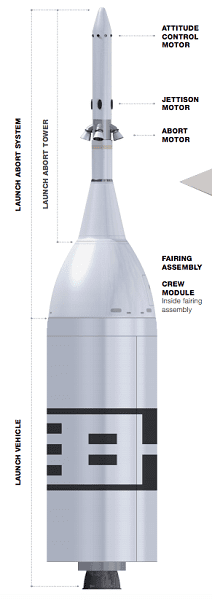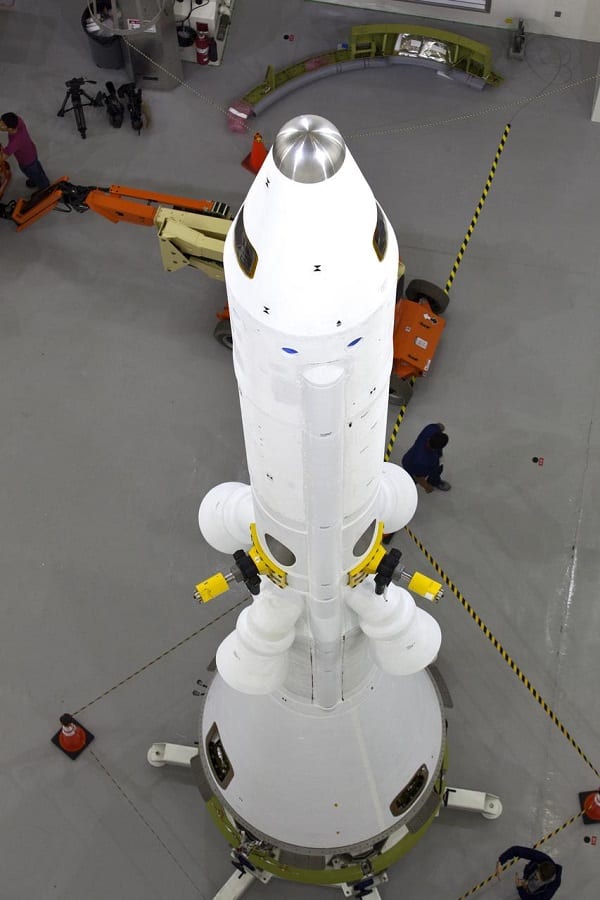NASA’s Ascent Abort 2 Test: What You Need to Know
June 24th, 2019
by Andrea Lloyd

How cool it is to watch live NASA’s Ascent Abort 2 (AA-2) flight test? Clear your schedule on July 2!
Considering we’ve been in space for 58 years, there have been relatively few space-related accidents. However, NASA and other space agencies remain prepared in case of emergencies.
Coming to a Florida launchpad near you this July is the Ascent Abort 2 (AA-2) flight test of the next safety component of Space Launch System rocket (SLS). The Launch Abort System rolled out to the Cape Canaveral Launch Complex 46 on May 24. It’s been sitting there since, going through finals checks and preparations before the milestone event. This isn’t some secret test though, you will have the opportunity to watch it live from NASA TV starting at 7:00 am ET on July 2.
What is the Launch Abort System and the Ascent Abort 2 Test?
The Launch Abort System (LAS) sits on top of the Orion crew module, prepared to jettison the crew away from the launching rocket and to safety within the first few minutes of launch in case of an emergency abort. In 2010, NASA tested LAS at a facility in White Sands, New Mexico.
In addition to a different configuration, this test will put LAS and the Orion crew module will be in a real-to-life scenario of an actual ascent, rather than simply sitting on a pad.
This isn’t a revolutionary concept, however. Both the Mercury Redstone and Apollo Saturn V rocket designs had a Launch Escape System. In 1958, Maxime Faget developed the idea of using a rocket to jettison a capsule away from a space vehicle while at NASA’s Langley Research Center in Hampton, Virginia.
The work he did continues today at Langley, who leads the Launch Abort System project with collaboration from NASA’s Marshall Space Flight Center in Huntsville, Alabama.

The test is only three minutes long. To be prepared, let’s walk through the LAS Tower’s different components.
The launch abort tower is a rocket with three different motors, which each have a unique role, to make the system work.
The Launch Abort System Components
- The Jettison Motor ignites to pull the launch abort tower away from the Orion capsule. This motor is capable of producing 40,000 pounds of thrust, enough to lift 26 elephants off the ground.
- The Abort Motor fires 400,000 pounds of thrust after the abort sequence is initiated. It can propel the crew in the 22,000 pound Orion capsule away from the launch vehicle.
- The Attitude Control Motor provides 7,000 pounds of steering force via eight proportional valves equally spaced around the three-foot-wide motor. This maneuvers the vehicle in any direction upon command from the crew.
All three motors work together to create the Launch Abort Tower. This test won’t have anyone in it. In fact, it’s just an Orion boilerplate, or non-functional craft with the right dimensions and weight, allowing for accurate testing.

What Will Happen with the Ascent Abort 2 Test Next Week
- The crew module and LAS will be placed on top of a Northrop Grumman Booster, which will launch the Orion test vehicle at Mach 1.3, which is over 1,000 miles per hour.
- 55 seconds into the flight test, the capsule will reach about 31,000 feet (about 6 miles). Abort sequence will be initiated.
- The abort motor fires, pulling the crew a safe distance away from the launch vehicle.
- Next, the attitude control motor reorients the LAS to allow maximum drag for the parachute, which is attached to the Orion capsule.
- Lastly, the jettison motor will fire, separating the LAS tower away from the crew module.
- In a real emergency, parachutes will deploy, (proving useful, once again) allowing the Orion to safely land in the ocean and inflate floats so the astronauts can be picked up later. However, for this flight test, the data recorders will jettison from the boilerplate, which will then crash into the ocean.
With a Little Help from Our Friends…
This entire LAS Tower is made for NASA through many contractors. Such partners include Lockheed Martin, Northrop Grumman, and Aerojet Rocketdyne. Using contractors helps support American industry as NASA works to return to the moon in the next 5 years.
What Can We Expect in 2024?
Recently, a renewed focus to return to the Moon has captivated American attention. Mike Pence announced this new goal in March on behalf of the Trump Administration at the National Space Council. What was once Apollo and the Saturn V is now, respectfully, Artemis and the SLS.
In 2024, the SLS rocket will travel from Earth to the Moon, our nearest neighboring body, carrying the first woman and the next man.
This new directive includes the goals of not just leaving footprints but establishing a long duration mission. In other words, to stay on the Moon like astronauts have stayed long term in the International Space Station.

Conclusion: We Can’t Wait to See the Launch Abort System and the Ascent Abort 2 in Action!
Hopefully, this test will be one of the few times the public sees the LAS in action. After the initial ascent in a normal flight, the LAS is flown off the rocket using the jettison motor and deposited in the ocean when it is no longer needed.
Be sure not to miss this fantastic opportunity to see the Launch Abort System capabilities!
Sources:
[1] Mahoney, Edrin, 2019: https://www.nasa.gov/feature/sending-american-astronauts-to-moon-in-2024-nasa-accepts-challenge
[2] National Aeronautics and Space Administration, 2019: Ascent Abort 2 Flight Test https://www.nasa.gov/sites/default/files/atoms/files/aa2_fact_sheet.pdf
[3] National Aeronautics and Space Administration, 2019: Orion Launch Abort System (LAS): https://www.nasa.gov/sites/default/files/atoms/files/orion_las_fact_sheet_8.5x11_4page_11_19_15.pdf
[4] Northrop Grumman, 2018: https://news.northropgrumman.com/news/releases/northrop-grumman-successfully-tests-orion-spacecrafts-launch-abort-motor
[5] Smith, Yvette, 2019: https://www.nasa.gov/image-feature/orion-launch-abort-system-attitude-control-motor-hot-fire-test
Photos courtesy of NASA
Want more science now?
Check out our news page where we post interesting studies and discussions (sometimes mocking them mercilessly) for more.
